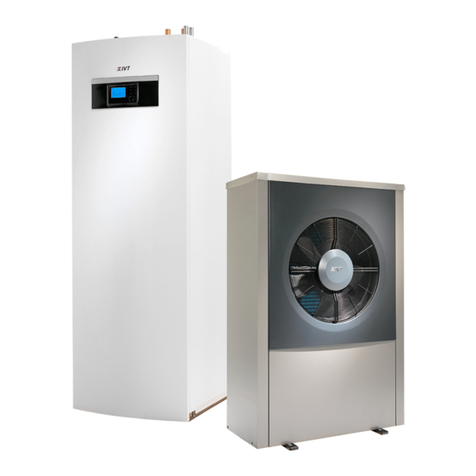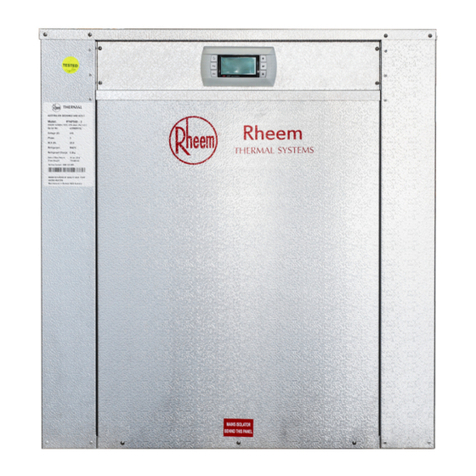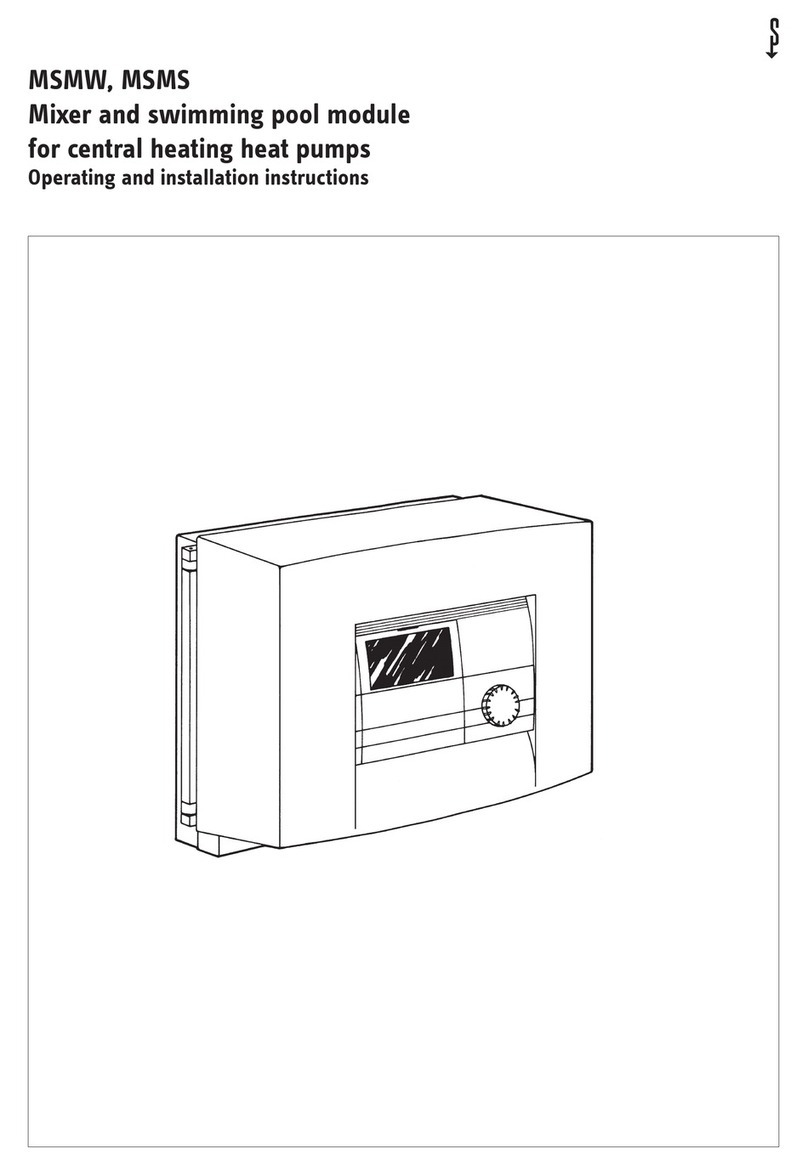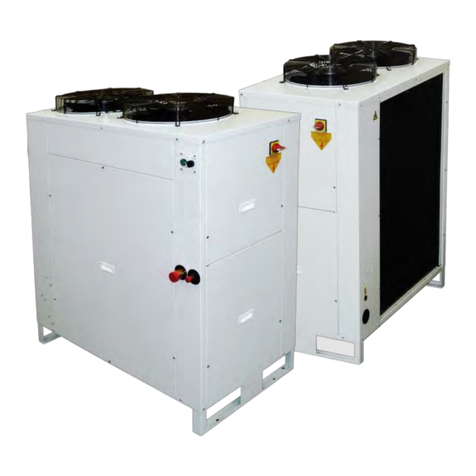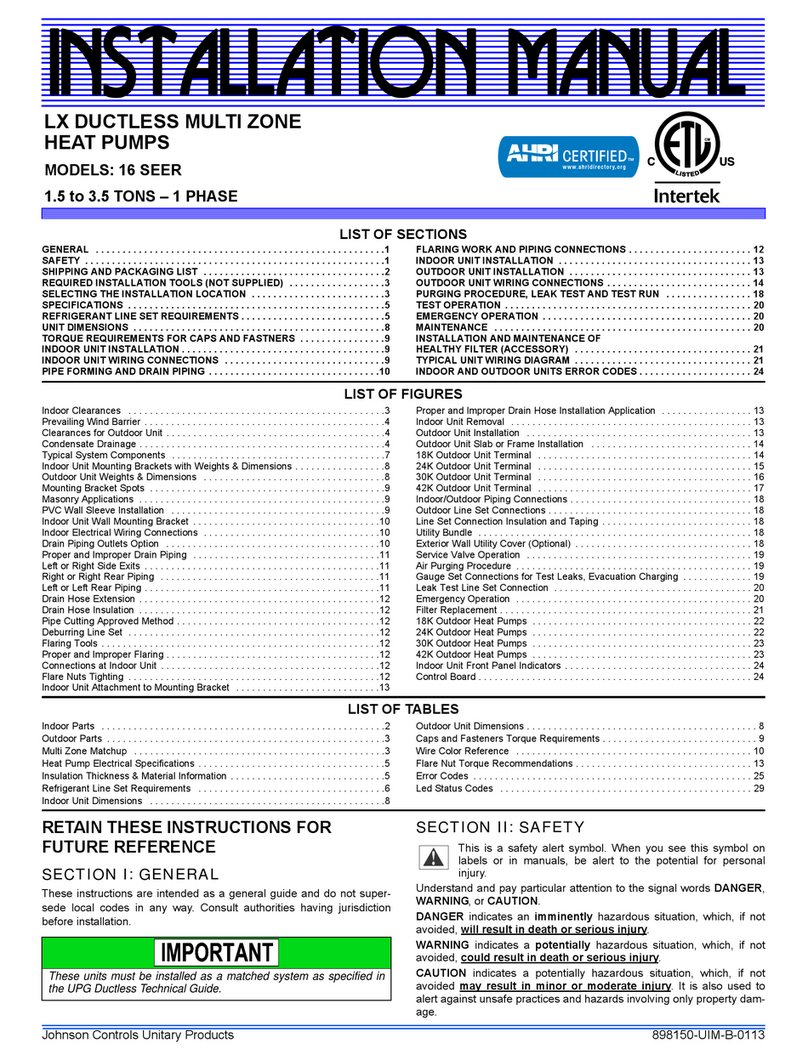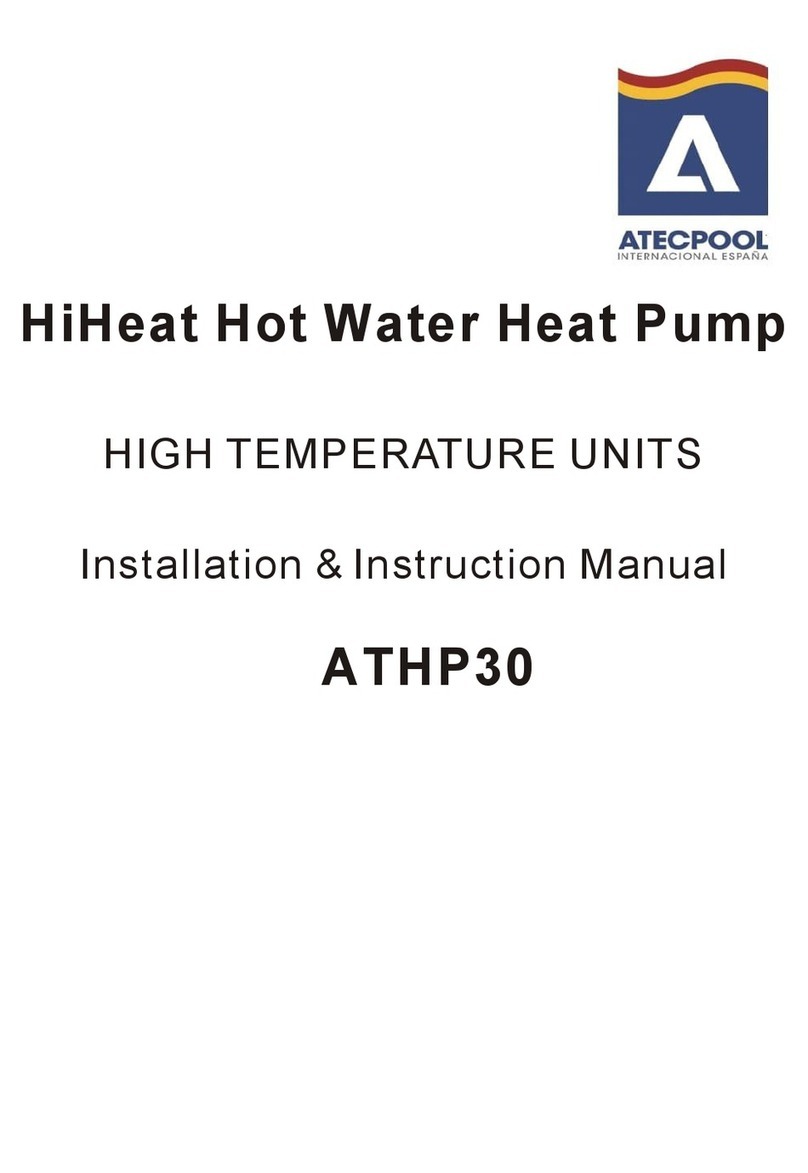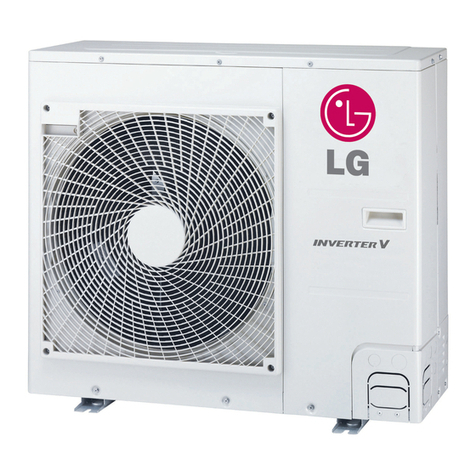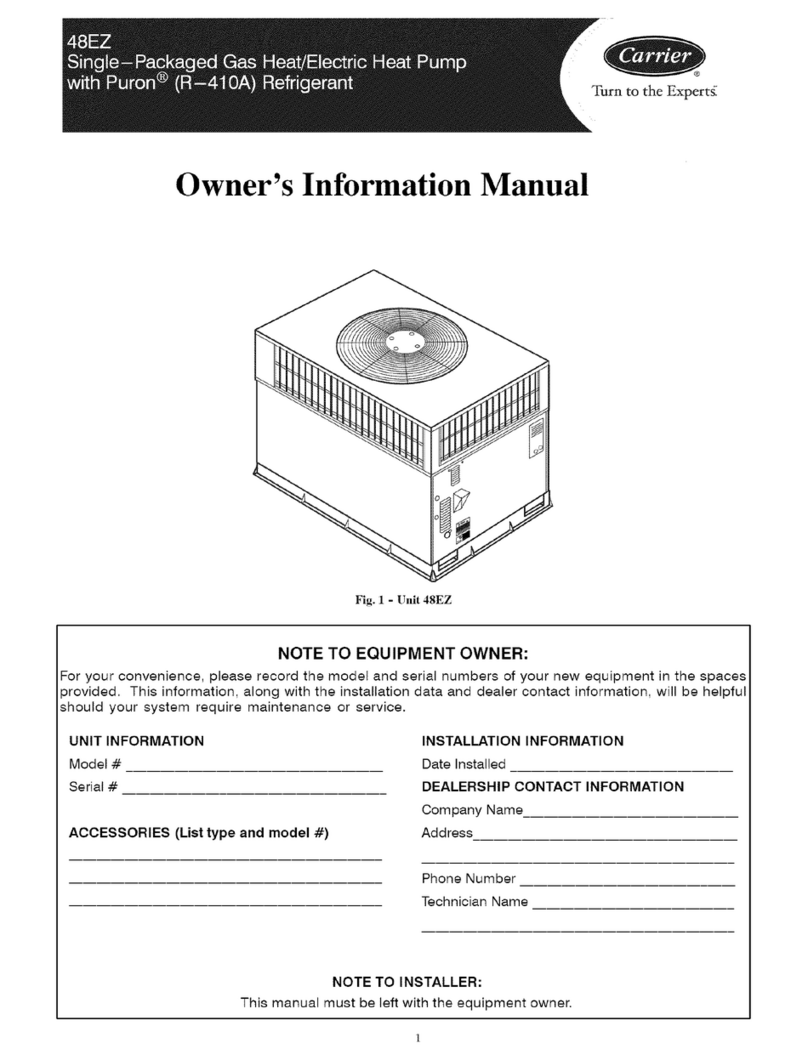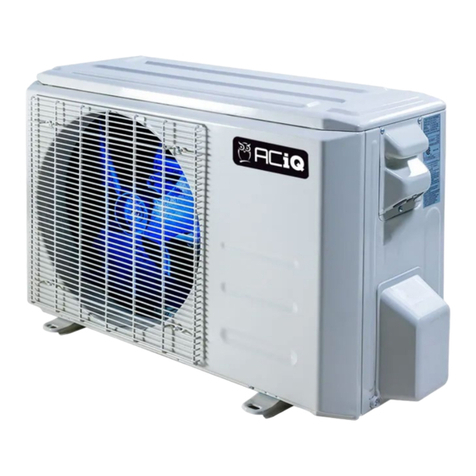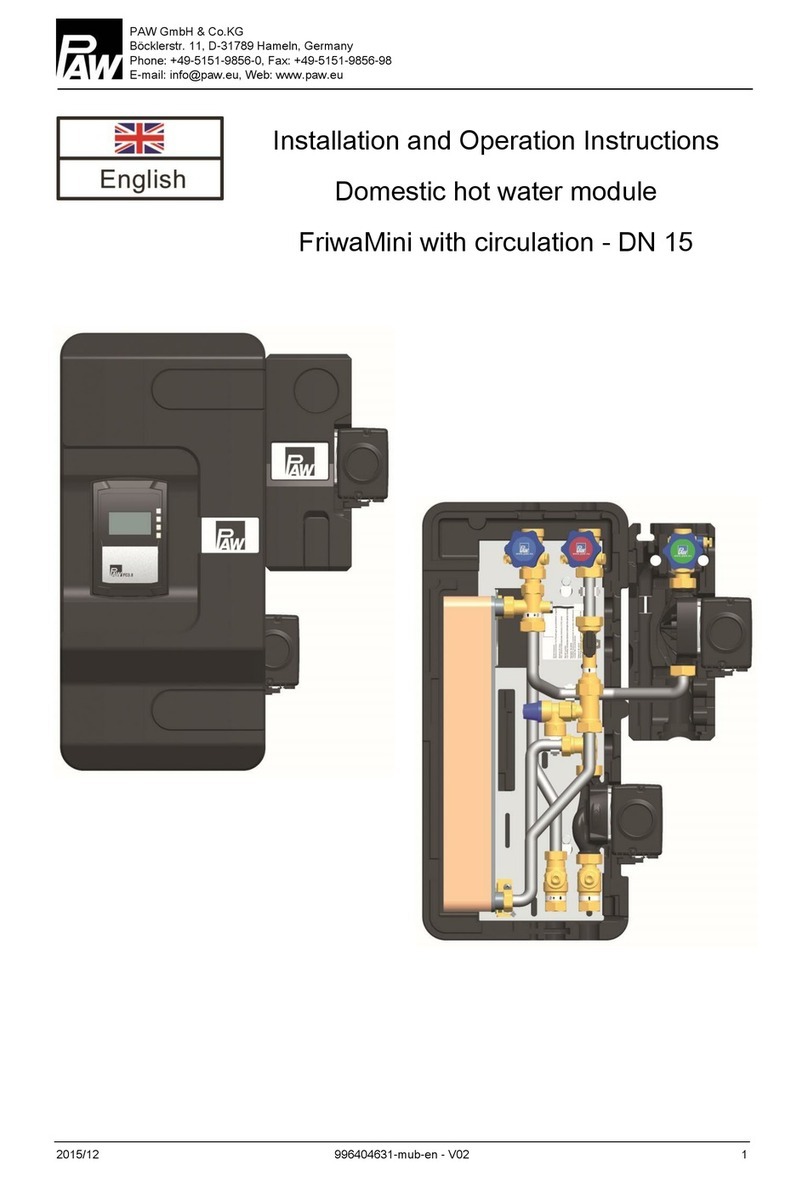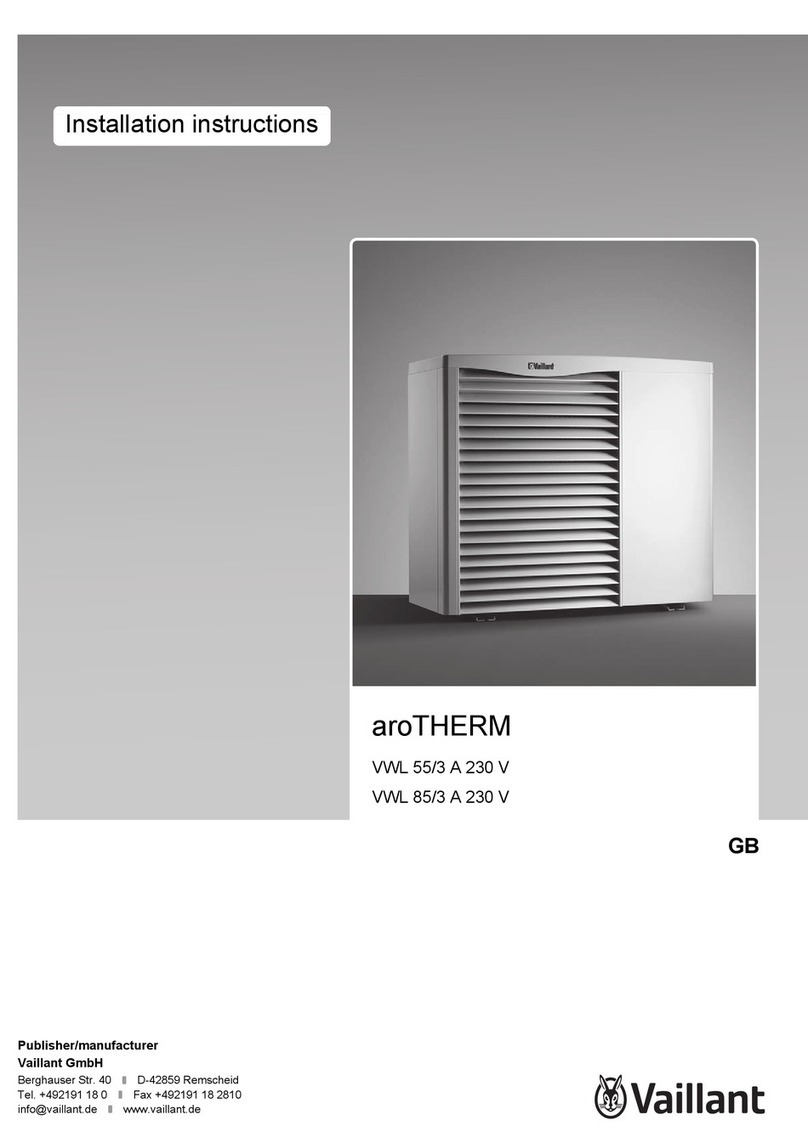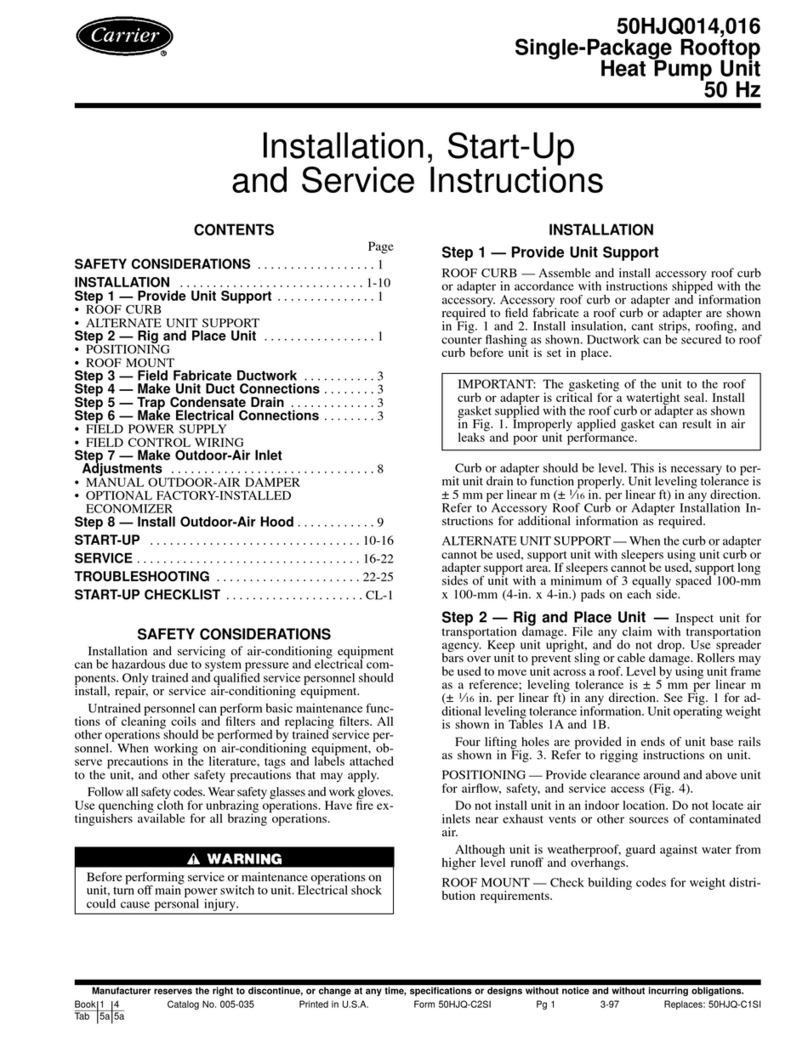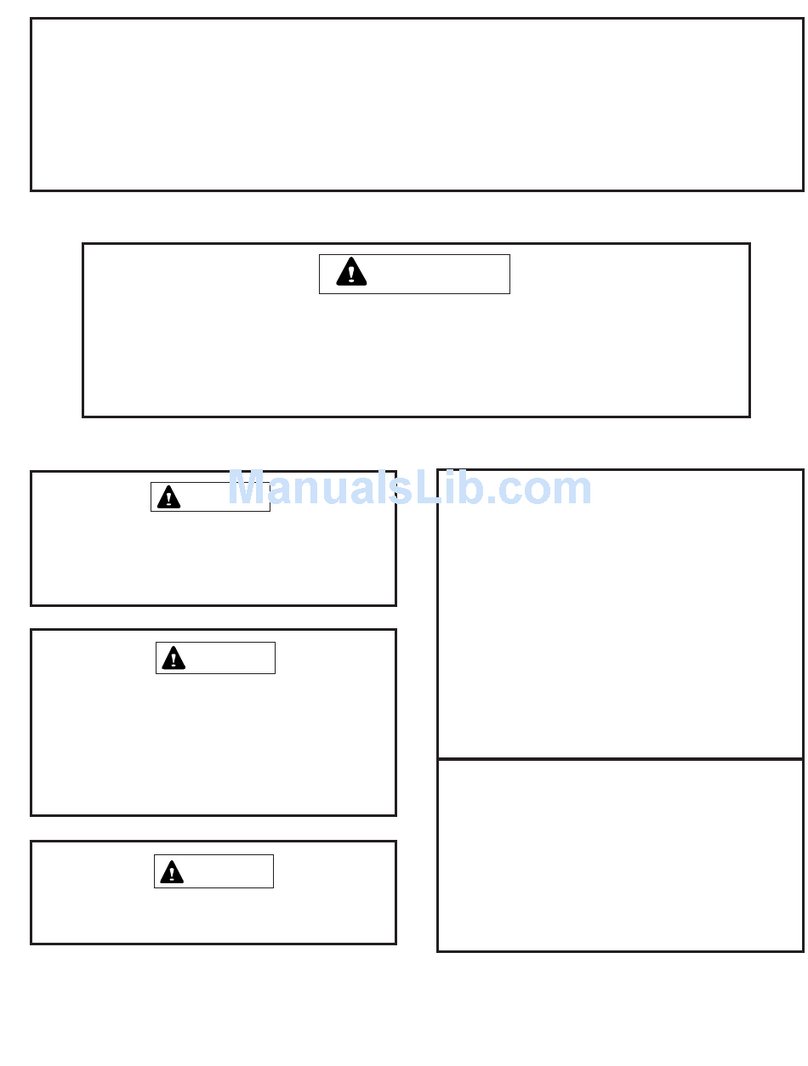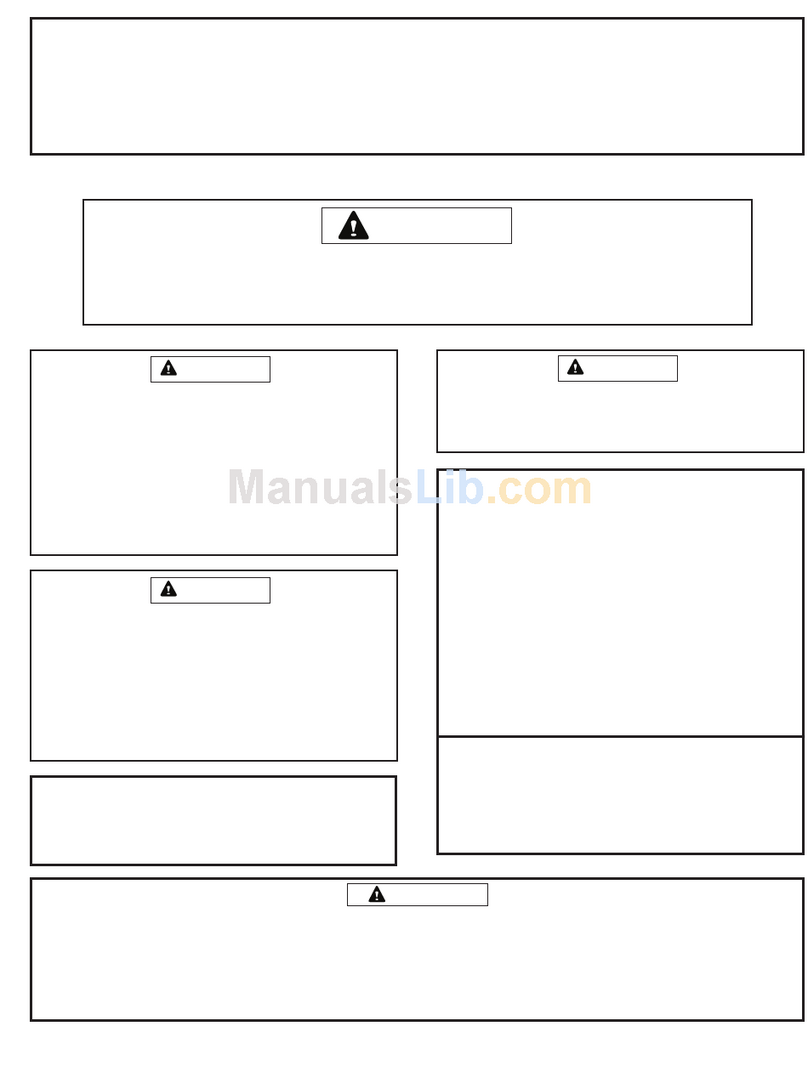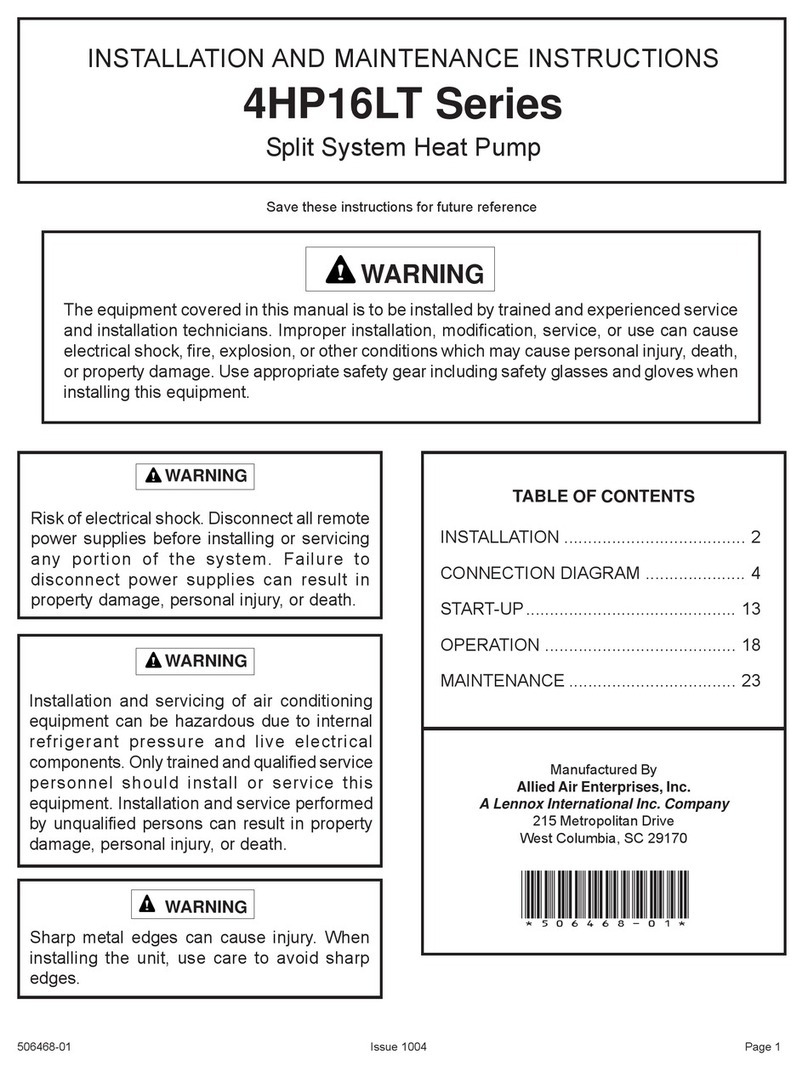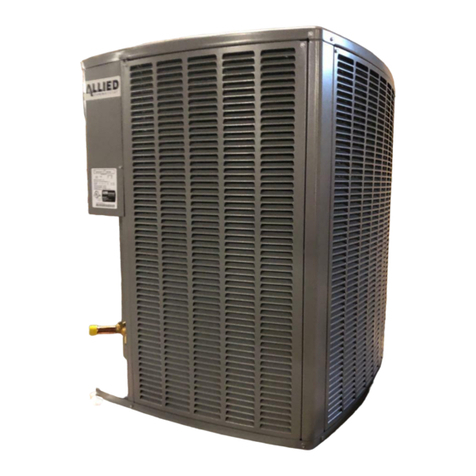
Page 8 of 26 506272-01Issue 0921
5. Removethepressure tapvalvecoresfrom the 4SCU13
unit’s service valves. Connect an R-22 cylinder with
clean refrigerant to the suction service valve. Connect
the R-22 gauge set to the liquid line valve and connect
a recovery machine with an empty recovery tank to the
gauge set.
6. Set the recovery machine for liquid recovery and start
the recovery machine. Open the gauge set valves to
allow the recovery machine to pull a vacuum on the
existing system line set and indoor coil.
7. Invert the cylinder of clean R-22 and open its valve to
allow liquid refrigerant to flow into the system through
thesuctionline valve. Allow the refrigeranttopassfrom
the cylinder and through the line set and the indoor coil
before it enters the recovery machine.
8. After all of the liquid refrigerant has been recovered,
switch the recovery machine to vapor recovery so that
all of the R-22 vapor is recovered. Allow the recovery
machine to pull a vacuum on the system.
NOTE: A single system flush should remove all of the
mineral oil from the existing refrigerant lines and indoor
coil. A second flushing may be done (using clean
refrigerant) if insufficient amounts of mineral oil were
removedduring thefirstflush. Aftereach system flush,
allow the recovery machine to pull a vacuum on the
system at the end of the procedure.
9. Close the valve on the inverted R-22 cylinder and the
gauge set valves. Pump the remaining refrigerant out
of the recovery machine and turn the machine off.
10. Use nitrogen to break the vacuum on the refrigerant lines
and indoor coil before removing the recovery machine,
gauges,andR-22refrigerantdrum. Re-installpressuretap
valve cores into the 4SCU13 unit’s service valves.
11. Install the factory-supplied fixed orifice (or thermal
expansion valve approved for use with R-410A
refrigerant) in the liquid line at the indoor coil.
Refrigerant Metering Device
4SCU13 units are designed for use with either fixed orifice
or TXV systems. Refer to the appropriate following section
for information on installing the chosen refrigerant metering
device.
Fixed Orifice Systems
4SCU13 units are shipped with a fixed orifice refrigerant
metering device. See specification sheets for the proper
fixed orifice size for each unit. In nonstandard applications,
the fixed orifice provided with the indoor unit may not be
Flushing Procedure
IMPORTANT: The line set and/or indoor coil must be
flushed with at least the same amount of refrigerant that
previously charged the system. Check the charge in
the flushing cylinder before flushing the unit.
1. Removeexisting R-22 refrigerant usingtheappropriate
procedure.
If the existing outdoor unit is not equipped with shutoff
valves, or if the unit is not operational AND the existing
R-22 refrigerant will be used to flush the system:
Disconnectallpowertotheexistingoutdoorunit.Connect
theexistingunit,acleanrecoverycylinder,andtherecovery
machine according to the instructions provided with the
recovery machine. Remove all R-22 refrigerant from the
existing system. Refer to the gauges after shutdown to
confirm that the entire system is completely void of
refrigerant. Disconnect the liquid and suction lines from
the existing outdoor unit.
If the existing outdoor unit is equipped with manual
shutoffvalvesANDnew R-22refrigerant will be used to
flush the system:
Startthe existing R-22refrigerant system in coolingmode
andclose the liquid line valve. Pumpall the existingR-22
refrigerant back into the outdoor unit.
(Itmaybenecessarytobypassthelowpressureswitches
to ensure complete refrigerant evacuation.)
When the low side system pressures reach 0 psig, close
thesuctionlinevalve. Disconnectallpowertotheexisting
outdoorunit.Refertothegaugesaftershutdowntoconfirm
that the valves are not allowing refrigerant to flow back
into the low side of the system. Disconnect the liquid and
suction lines from the existing outdoor unit.
2. Remove the existing outdoor unit. Set the new R-410A
unitandfollowthebrazingconnectionprocedureoutlined
previously on this page to make line set connections.
Do not install the R-410A thermal expansion valve
at this time.
3. Makelowvoltageandlinevoltageconnections tothenew
outdoorunit. Do not turn on power to the unit or open
the outdoor unit service valves at this time.
4. RemovetheexistingR-22refrigerant flow control orifice
or thermal expansion valve before continuing with
flushing procedures. R-22 flow control devices are not
approved for use with R-410A refrigerant and may
prevent proper flushing. Use a field-provided fitting to
reconnect the lines.





















